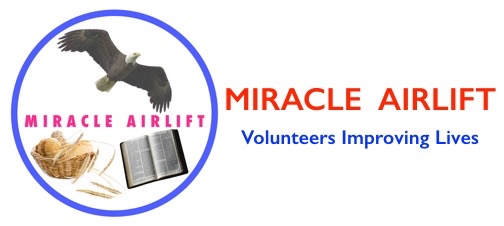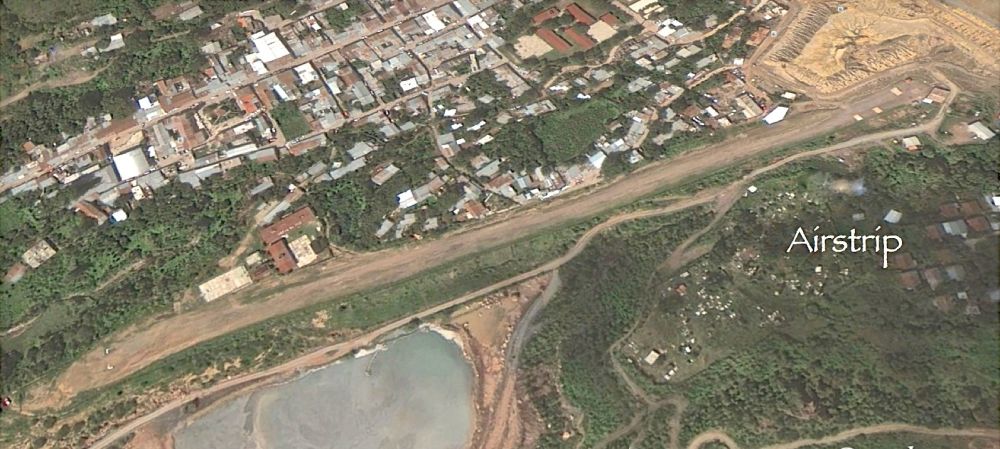REMOTE AREA WORK IS LIFE-SAVING…
Among the natural resources of Mexico are heavy metals, mined in the mountains of the Sierra Madre. Remote mountain mining towns like the one in this photo, are thousands of feet above sea level and difficult to visit. This mine has been operating for more than a century, yet the cost of mining in this community is counted in lives. Miners are dying from endemic lung cancer, which occurs in workers exposed to Radon and its radioactive daughter particles. These are naturally occurring products of underground radioactive decay. The physics was understood in the early 1900’s, and effective prophylactic measures routinely in use since the mid 1940’s. The hazard is manageable, and disease is preventable.
Endemic lung cancer in miners is due to inadequate underground ventilation, for which the mining company is responsible. Needless deaths In this community are the consequence of a callous failure to act, or willful ignorance. Even worse, this particular mining town is not an isolated instance. The problem is widespread, due to the multitude of metal mines in remote areas throughout Mexico. The risk is high, and too often the work is a death sentence.
During a productive career spanning over four decades, this author accrued more than twenty years of professional experience working in various radiation environments. Some were substantially more hazardous than a poorly ventilated mine. The benefit of that experience gives Miracle Airlift confidence in our ability to protect miners, and we have a prevention plan. We also have the resources to assemble a capable medical team, which is essential to the mission.
However, knowing how and what to do is only part of the solution. We must also handle logistics, and gain the cooperation of mine operators and managers. We have learned that, in Mexico, employee safety does not get priority. A neighbor (age thirty-something) died of obstructive pulmonary disease after working in a factory spray paint facility. Before her death, she told us that she had never worn a mask while working. We immediately bought one (with appropriate filters) for another young woman we knew to be working in similar conditions. Her delight with its effectiveness was obvious, since no one else had one. Conversations with her co-workers ensued. The supervisor observed for a week, then abruptly moved her to a work station in clean air. This supervisor’s action spoke volumes, and we pity the workers who remain. Although paint fumes versus radioactive dust might appear to be comparing apples with oranges, the analogy is valid. With no means of protection from inhalation of dangerous substances, the outcome is the same. We must introduce protective measures without antagonizing mine managers, by what might otherwise be perceived as meddling in their business.
We have a plan for the mines, and a means to gain the cooperation of mine managers. However, there remains a final challenge, logistical support. Access to these mountain mining towns is difficult and sometimes impossible over land, due to washed out roads. A town can be isolated for weeks with little warning. This is one of several reasons that airstrips are common in the mountains. For our volunteer doctors, a one or two week trip into the wilderness is a non-starter. Therefore, an airplane is a requirement. We need to airlift the medical team and supplies into these remote locations. The mission will require a medical doctor on site for one or two days at a time. Our volunteer physicians are busy professionals, who typically volunteer for one day at a field clinic. Three days is a lot to ask, but for a mission of this importance they’ll do it.
The remaining challenge is to buy, or otherwise obtain an airplane that is capable of the work. Briefly, that will be an airplane that can safely operate from short fields that are thousands of feet above sea level, and carry a modest load. That’s a lot more difficult than it may seem. Within the multitude of light airplanes on the market, there are only four or five models that are capable, and we don’t have one of those. If you can help, please contact us or donate through the website. No donation is too small. This is much more than a self-help project to improve lives, it’s a project to SAVE lives!


настоящий сайт гидра – hydra закладки, гидра магазин зеркало
perdere 10 kg in una settimana
превосходный ресурс
Фапабельные интим истории про анал
клевый ресурс
Коллекция эро историй для взрослых
купоны для яндекс директа – купоны яндекс директ оптом, купон яндекс директ 3000 форум
Bonuses empire market onion url
яндекс репетитор егэ русский – репетитор подготовка к егэ, подготовка к егэ по английскому
visit this web-site hydra
go to my blog dark web
12 шагов где пройти – героиновая наркомания, детоксикация наркозависимых цены
check https://hydra20original.com